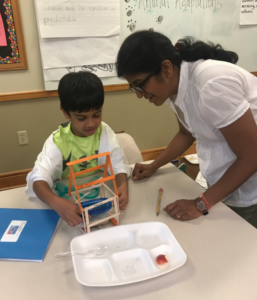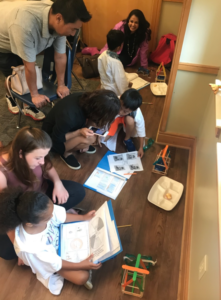Summer SAVY 2018: Session 2, Day 5 – Animal Adaptations (Rising 1st)
Happy Last Day!
Today was a very fun day for our young scientists. We would like to thank all the parents who were able to visit our classroom. The students spent the rest of their day reviewing what they had learned about food chains/webs, survive/thrive, and animal adaptations. For example, during one activity the students had to match several animals to their best characteristic of environmental adaptations. Students worked with a partner to orally share their explanations. Hopefully they are leaving with more knowledge about “animal adaptations” and a better understanding of the various generalizations involving “change”.
Sincerely,
Dr. P.
About the Mealworm:
1. Keeping the mealworm in a warm place will encourage quicker metamorphosis.
2. Over time, the mealworm will become less active.
3. The mealworm will shed its exoskeletons.
4. The mealworm will change into the pupa. The pupa stage will last from 10 to 20 days. Pupae do not eat or move.
5. After the pupa’s hard shell splits, the adult mealworm (beetle) emerges.
6. After the adult beetles emerge, they will mate and lay eggs on the bottom of the plastic box. Students will be able to see tiny circle of eggs surrounded by a sticky liquid to protect the eggs stuck to the plastic. The circle grows larger, and then tiny mealworms emerge from them in about 2 weeks.
7. It will take up to 90 days or sooner for a larva to grow to the pupa state.
8. The mealworms eat small pieces of apple, carrots, or lettuce. They also use these food sources for water.
Pictures from Open House


